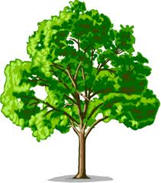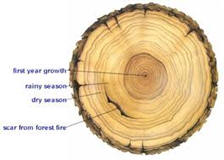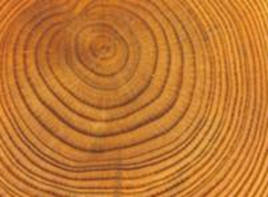 Trees Tell a Story
Trees Tell a Story
 Trees Tell a Story
Trees Tell a Story
Columbus Elementary School
Summer Research Program for Science Teachers
August 2012
Subject:
Elementary Biology and Environmental Science
Grade Level:
3-5
Time Requirement:
Three science periods (2 ½ hours+)
Topics Covered in this Lesson:
how organisms (trees) obtain resources for survival, counting and dating
tree-rings, plant/tree structures and function
Learning Objectives (SWAT):
·
Identify parts
and functions of a tree
1.
Bark – protection
2.
Rings- growth of
cambium
3.
Pith – center of
tree
4.
Xylem and Phloem
– transfer of water, nutrients etc…
·
Recognize and
count annual growth rings to date tree
·
Identify ring
patterns (width differences) or markings
·
Use the ring
patterns to tell a story about the growing conditions when the tree was alive
Vocabulary:
annual growth ring, precipitation, drought, temperature, cambium, xylem,
phloem
Materials:
tree ring samples (cores or cross section), hand lens, toothpicks, and science
notebooks
Procedure:
1.
Review how trees obtain needed resources in order to survive: air (C02/O2),
water, minerals, sunlight etc…
Talk about an average tree’s life cycle and life span.
2.
Review and discuss parts of a tree: structures and function.
3.
Hand out tree core/cross section samples. (Photocopies of scanned cores or
cookies could be substituted.) Have
students make observations and discuss with team members what they see.
4.
Whole class discussion and diagramming of observations.
Students diagram in notebooks. Add new vocabulary: pith, rings, bark.
5.
Hand out hand lenses for students to make more careful observations and
begin to count rings. (What are the
rings? Usually a few students know
that the rings have something to do with the age of the tree)
Add new vocabulary: cambium, xylem, phloem.
6.
Students systematically count rings from bark to pith.
Discuss counting techniques and the importance of replication of data and
using similar methods for counting.
7.
Students calculate the age of their tree sample (bark is considered
present year for this activity).
Using current year as start date, students will subtract to find age of tree.
NEXT DAY…
9.
Discuss the idea that the tree can only add annual growth rings when its
needs are met. What are the trees
needs? Air, water, minerals and
sunlight- light and temperature.
10.
Question: how could the trees needs account for rings sizes and patterns?
Allow students to make connections such as I need to eat to grow.
So if I didn’t have too much food, I might not grow very well.
11.
Using a sequence map, have the students tell the story of their tree’s
life. Be sure to include important
events as shown in rings. Student can
decide what factors led to the tree growing well or having difficulty.
12.
Students share storylines.
Assessment:
Give 1/ 2 the class climate
information such as precipitation or temperature data.
|
YEARS |
ANNUAL
PRECIPITATION DATA |
|
2008 |
Increased rain |
|
2007 |
Average
precipitation |
|
2006 |
Average
precipitation |
|
2005 |
Drought |
|
2004 |
Drought |
|
2003 |
Floods |
|
2002 |
Average
precipitation |
|
2001 |
Drought |

With the other half getting a
copy of a tree ring sample. Students
will need to match the ring samples to the climate data.
They will then defend their selection.
Standards (NGSS-draft)
3. EIO Environmental Impacts
on Organisms
c. Analyze data to describe
how humans, like all other organisms (TREES), obtain living and non-living
resources from their environment.
e. Use evidence to argue
that some changes in an organism’s habitat can be beneficial or harmful to the
organism.
4. PSE Processes that Shape
the Earth
b. Obtain and communicate
information about how patterns in tree rings and ice cores are used as evidence
to describe the recent history of Earth’s climate.
c. Construct models to
describe systems interactions for the geosphere, hydrosphere, atmosphere, and
biosphere and identify the limitations of the models.
h. Provide evidence to
explain how increases in Earth’s temperature can affect humans and other
organisms.